The Van, Turkey Earthquake of 23 October 2011, Mw7.2: A Preliminary Report on the Reconnaissance Visit Preformed by IIEES Reconnaissance Team, November 17 to 21 2011
IIEES, Tehran, Iran
Reported at: 27 November 2011.
1. Introduction
After the earthquake of 23 October 2011, Mw7.3 in Van, eastern Turkey, the International Institute of Earthquake Engineering and Seismology (IIEES) according to his Learning From Earthquakes continuing Program, reconnaissance team has formed a team to perform the reconnaissance visit and start the technical observation on the event. The event has occurred about 150km west of the Khoy, West Azarbayjan Province of NW Iran, and the event was felt as well in the cities of NW Iran. The earthquake caused more than 600 life losses, according to official reports, and extensive damages in the cities of Van and Ercis in the Van province and the villages between the Van and Ercis, specially those located in the north of Van suffered from mainshock and aftershocks, specially the aftershock of wednesday 9 November 2011 (mb5.6). The extensive damages in the first event, has been intensified by the aftershocks and mainly the event in 9 November 2011, known by the local inhabitants as the “2nd earthquake” (since it was greatest damaging event after the first event in 23 October).
2. Visit Plan
The Visit was planned to cover the geological, geotechnical features (surface fault/fissures, landslides and lateral speadings, and investigating the possible source site effect), and building damages, failures in lifelines and special structures, as well as the social aspects and disaster management.
3. field observations:
- Seismotectonic: The causative fault of the Van earthquake was a compressional fault, having a minor strike slip component. According to the field geological evidences, the fault has a dip direction towards north/northwest. Therefore the mechanism of mainshock was compressional with a minor strike slip component (to be right lateral) with a dip towards the north. There are the evidences of NNW-SSE source directivity effect, normal to the fault plan. The buildings in Van and Ercis has been mostly moved in this direction. The distribution of the aftershocks are mostly in the north of Van in the WSW-ENE direction mostly located around the villages of north Van (Alakoy and Tabanli and around). The surface fissures are distributed in the north of Van, mostly in the region between the Van Gulo (Lake) beach and the Ercek Gulo (Lake), passing from the north of the Van University Campus in east-west direction. There are not major fault scarpment but east-west directed compressional (and some strike-slip) fissures with appartures of 10 to 50cm, might be followed in an approximate length of 10km.
- Surface fault rupture: In the north Van area between north Van, Van Eskekesi, Bardakci, Zeve, Topaktas, and Citoren up to Mullakasim is visted. The surface fissures are obvious around Zeve. There are some lateral spreadings and landslides around Topaktas. The fault surface ruptures are visible in the north of Bardakci towards the north of the Van university Campus (marking some surface displacements on the road and irrigation Channels). The Van Golu (lake) beach is visited in the morning of 20 Nov 2011, and a previous collapse of Sea Terras Clifs is visible, the collaps might be ancient (may be corresponding to shaking in 1664, 1935 (Van) or 1976 (Caldiran) earthquakes in this region. Afternoon visit was concentrated on the citadel of Van, dated by about 2500 years Go, having a hieroglyphic historical writing possibly relating to Sirous, the Great (dated about 500 B.C.). The citadel is renovated and partially reconstructed in 2010. The ancient city of Van in located in the south of the carbonate rock based Citadel, and evidently demolished. There is a wall in the east of the hill. There are some minor fissures on the walls of the citadel, due to the 23 oct 2011 Van earthquake.
- Geotechnical aspects: The most important geotechnical aspect of the Van earthquake of 23 October 2011 was the site effect. The cities of Van and Ercis are located on the thick alluviums of the coasts of Van Lake and the visited damaged locations in these cities are assessed to be affected by a major soil amplification problem. The city of Ercis itself in the north of the Lake, in built on a loess terrace with an estimated thickness of 50 to 50 meters, and the major demolished buildings of 4 to 6 stories might be shacked with a long period motion of 0.3 to 0.6 sec.
- In Van General Hospital: The Van Hospital Construction started in 2008 and started to work in the end of September 2011, one month before earthquake. The hospital is restarted to work 2 days after event (the staffs left the hospital and feared to comeback within 48 hours). There are actually 3 functioning hospitals in Van. 5 private hospitals were working in Van before earthquake. 15 engineers came to visit after the event. In the first day of earthquake about 1000 injured people referred to Van hospital and about 200 majorly injured people transferred to other cities by ambulances and air ambulances. 1st day there prepared they prepared a field hospital (Sahra hastanesi). After the 1st event they used the Sahra hastanesi (temporary field hospital). There are 700 beds about 50 ICU beds , 20 Hemodialise, 30 beds for burned peoples. The total death in hospital 35 peoples and some 100 might be passed away after being transfer to other cities. There was no damages to Gaz system, the electrical deficencies are reported. After the earthquake all electricity facilities stopped, but repaired just after. Communication facilities became one way after event.
- In AFAD, Sivil Savuma (civil defense) Kriz Merkezi (Crisis Center), in Van, we are told that the total victims who are reported by hospital resources, are 644 people (477 in Ercis). 222 people are rescued (injured) from debris (by AFAD). The number of search abd rescue staff 476 team 3503 personals attended in the mainshock of 23 Oct 2011. In the second event (9 nov aftershock) 36 team and 896 personals had worked as search and rescue. The number of Tent was 71000 , installed. 128000 people used the food support from Kriz Merkezi. The government body to make search and rescue is Sivil Savuma and Kizilay (Red Crescent) is responsible for temporary settlement and first aids. There are some other minor (private) search and rescue bodies like ACUT. In villages, the major problem is breathing after the event but in modern buildings such problem was less. However the concrete structures have been demolished, suffered from a sandwich collapse, there left almost no or very few hope to rescue people from such total collapses.
Performance of buildings
- RC buildings by 5-6 stories, among all other types, were suffered more damages.
- Some buildings damaged and destruction caused by the strokes of adjoining structures, buildings must be detached from each other by a gap. Minimum gap between two adjacent buildings did not been considered.
- The plan of the building should be simple in shape and be symmetrical along two orthogonal directions without much projection or setback. In addition, asymmetrical plan changes in the vertical configuration of buildings are to be avoided.
- Heavy cantilevers damaged.
- The dead load of the buildings was so much. Utilizing of high-strength structural materials by enough ductility and lightweight nonstructural materials to reduce the building weight is preferably recommended.
- The most important problem in damaged buildings was lack of ductility. Building and its components should be designed to assure the appropriate ductility.
- Mostly of buildings were those by moment resistance frame in that columns were failed. They should be designed such that vertical elements (columns) would fail later than beams.
- Non-structural members, especially internal walls and facades suffered lots of damages. These elements are to be constructed such that they would produce as little disturbances as possible for the movement of structural members at the time of earthquake.
- In basement floor of some buildings, there was short-column. Creating of short column especially in basement story shall be avoided.
- Staircases of some RC buildings damaged severely. It shows we have to attend to design against earthquake loads.
- A few buildings in Van City, e.g. Bairam Hotel, were collapsed in an aftershock by magnitude of 5.7.
4. Conclusion
The IIEES team has visited the during 5 full days the prone area of the Van earthquake of 23 October 2011, Mw7.2. The major points which have been focused by the IIEES team were surface fault ruptures, geotechnical failures and site effects, building and major facility collapses and disaster management. The major geological/geotechnical problems were directivity effects and soil amplifications, and major buildings which have been demolished are 4 to 6 stories. The debris of most of the demolished buildings in Van have been removed, but in Ercis, the debris of most of the demolished buildings have not been removed 1 month after the event and even the bad smell of death bodies (trapped under the debris) might be felt in different places in this city. The major causes of death casualties seems to be the strong shaking due to near field conditions to the source of this Mw7.2 earthquake, site conditions as well as construction deficiencies in 4 to 6 story building apartments.
 |
 |
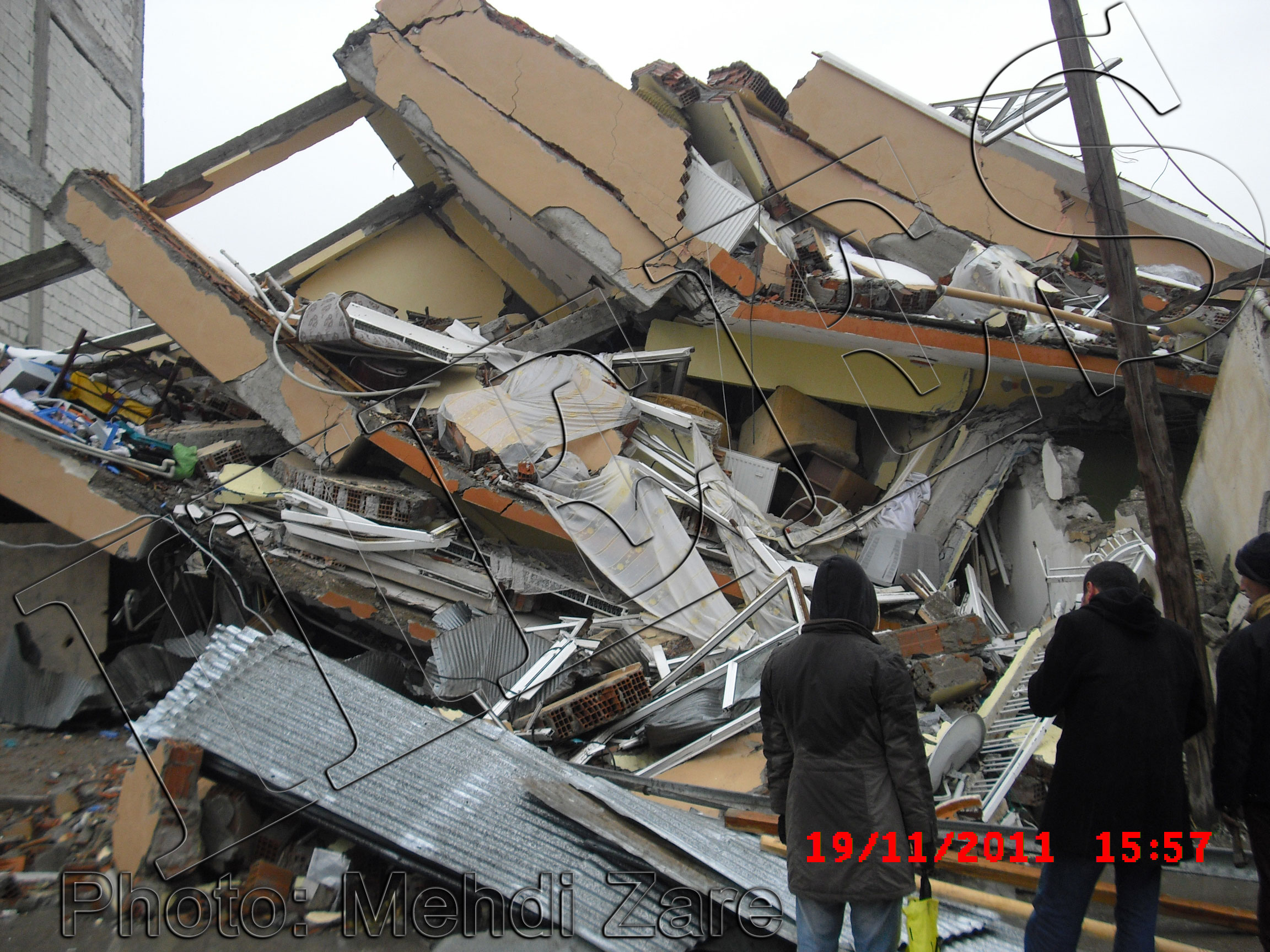 |
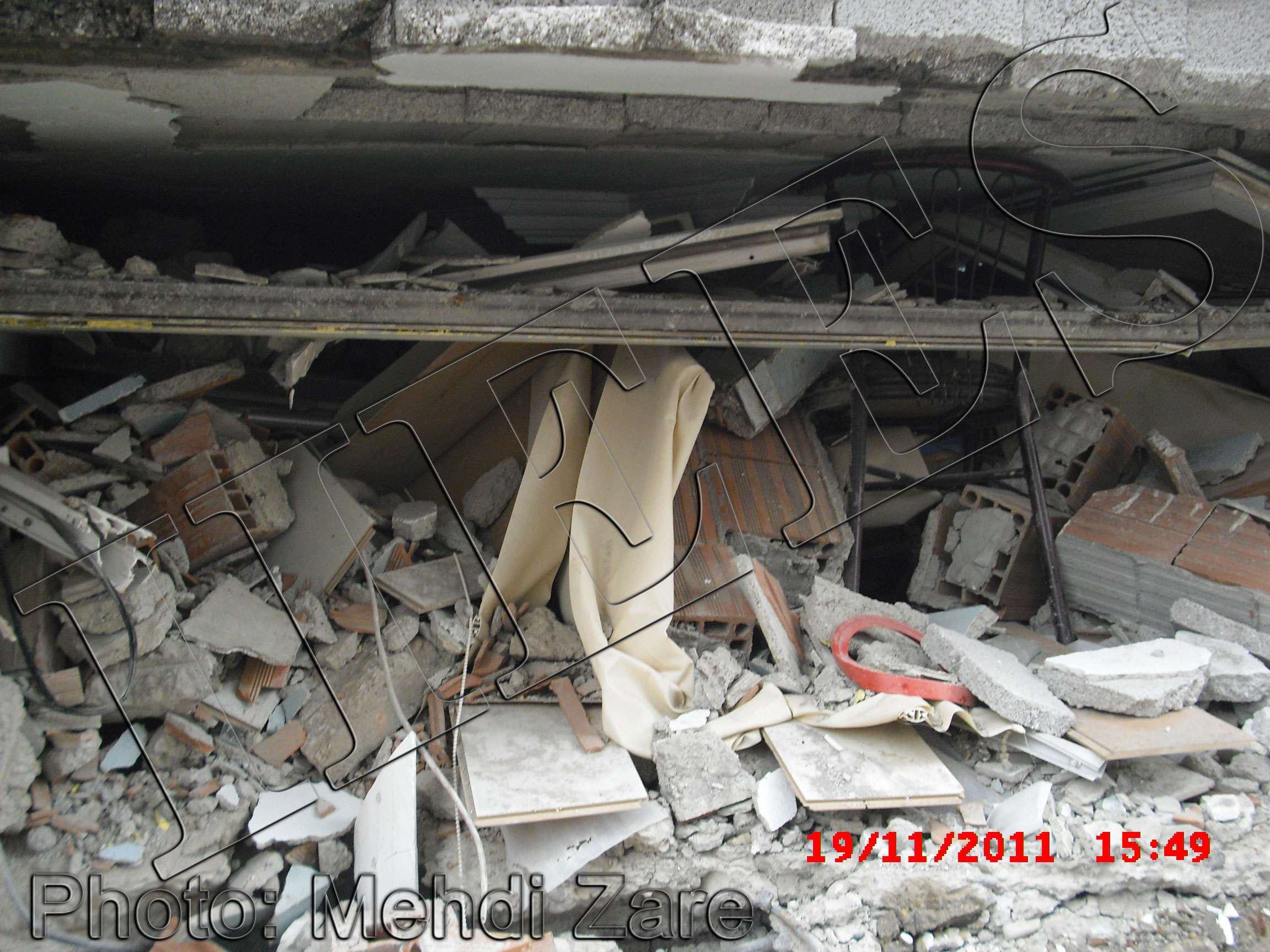 |
 |
 |
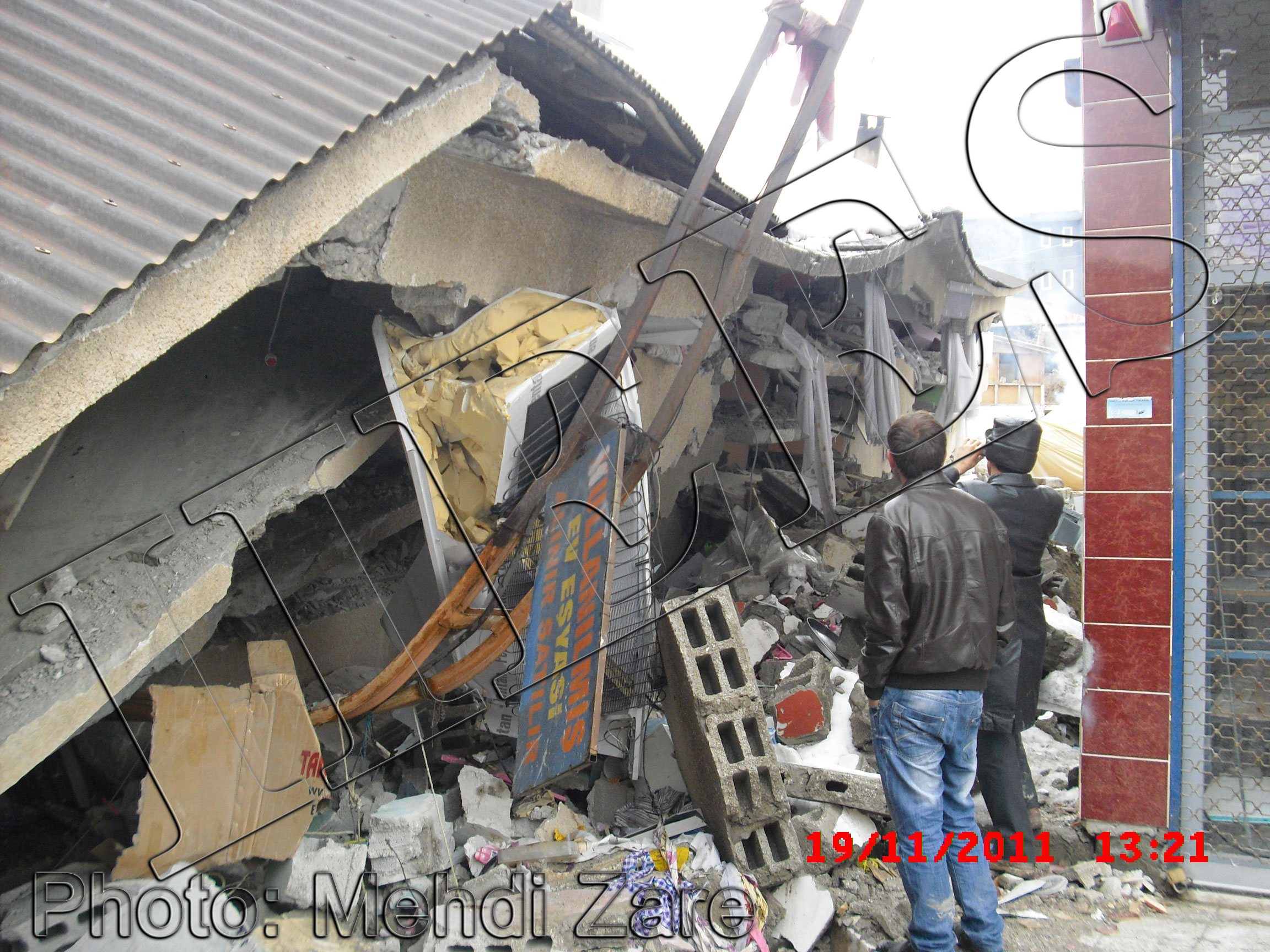 |
 |
 |
 |
 |
 |
 |
 |
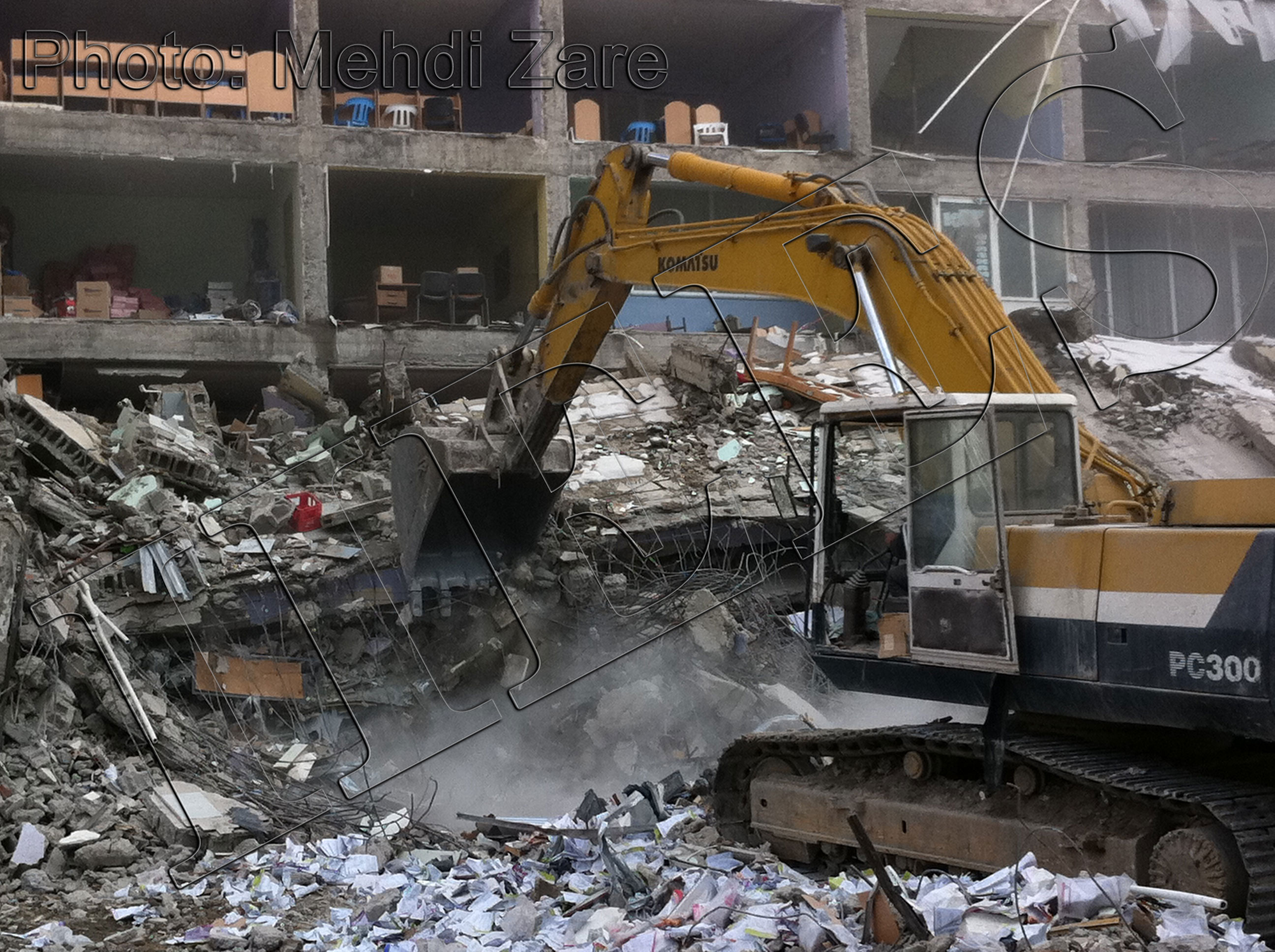 |
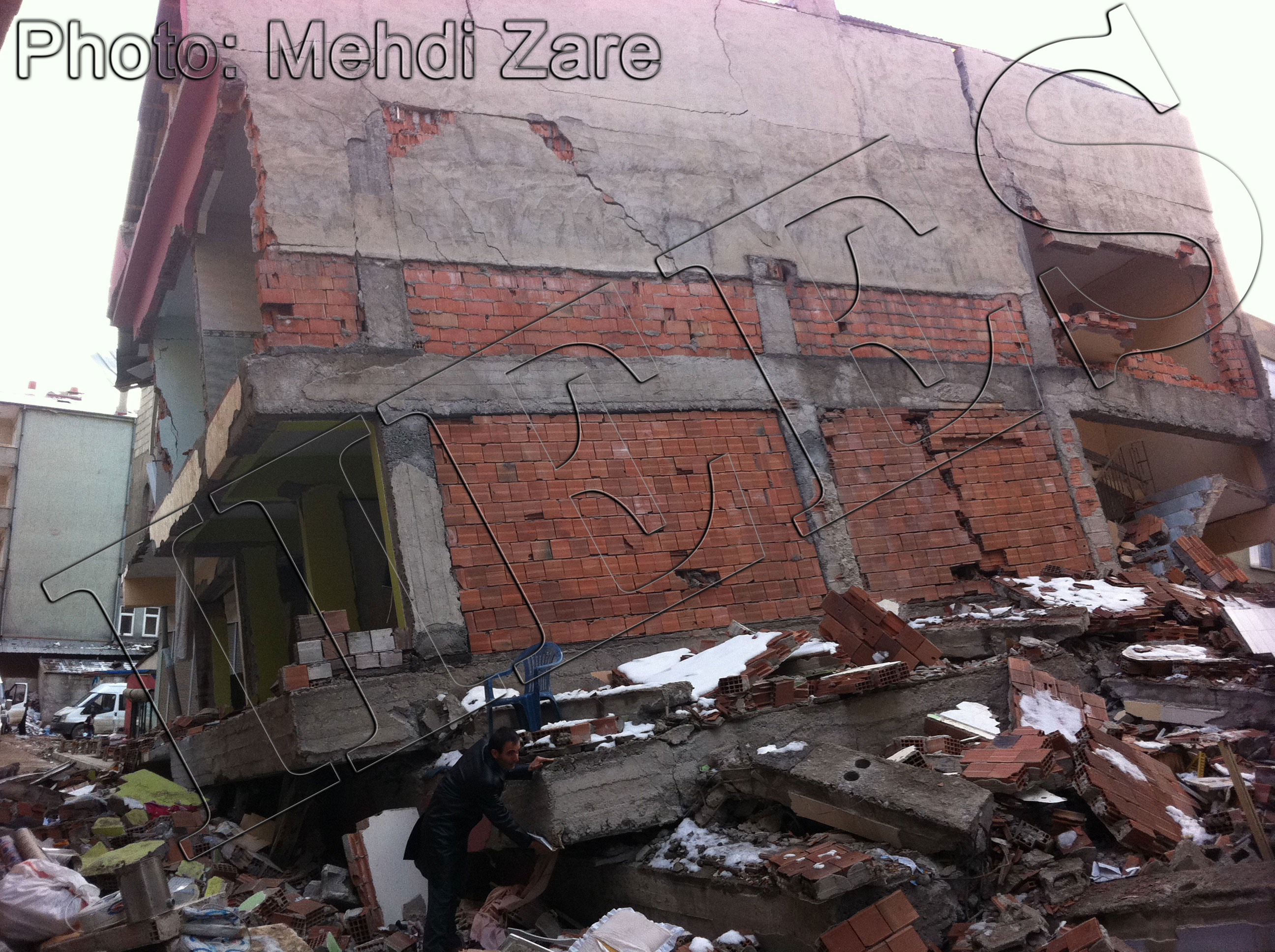 |
 |
 |
 |
 |
 |
 |
